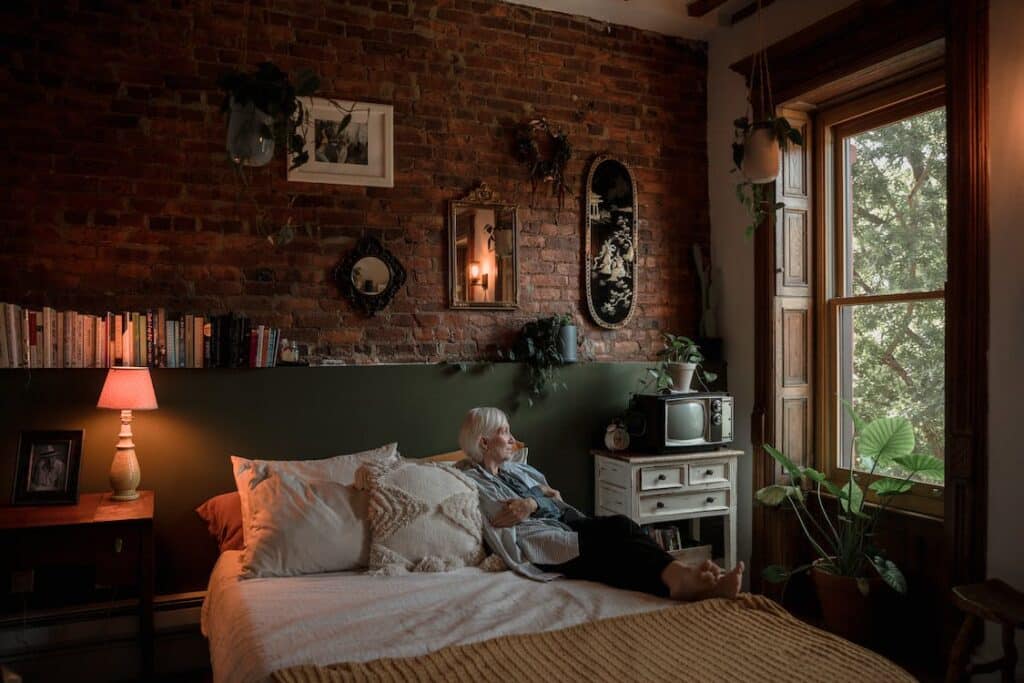Optimizing Comfort: Memory Care Facility Design
Did you know that a memory care facility design, like Westmont of Encinitas, directly impacts residents’ emotional well-being and cognitive function? Thoughtful design elements such as safety features, natural light, and personalization foster independence and connection while enhancing overall quality of life.
Understanding key dementia care design standards ensures a supportive and engaging atmosphere tailored to the needs of individuals with memory impairments.
Safety Considerations in Design
Prioritizing safety in memory care facility design is essential for fostering a secure and nurturing environment. Complementing safety features such as rounded furniture edges, secured handrails, and memory care room design innovations minimize risks and promote independence. Clear emergency protocols and designated evacuation routes prepare residents and staff for crises. Non-slip flooring further enhances mobility and reduces fall risks, reinforcing a sense of security. Fall prevention devices can also empower residents to navigate their environment confidently.
The Importance of Natural Lighting
Natural lighting is a fundamental component of memory care facility design, influencing mood and well-being. Exposure to sunlight helps regulate sleep patterns, enhances visual comfort, and supports cognitive function. A well-lit environment significantly contributes to enhancing quality of life, reducing anxiety, and promoting emotional well-being.
Mood Enhancement and Cognitive Benefits
Proper exposure to natural light is crucial in memory care design trends. It fosters an uplifting atmosphere, enhances serotonin levels, improves alertness, and encourages social interaction. Thoughtfully placed windows and skylights optimize daylight, making spaces feel more welcoming and engaging.
Supporting Sleep Regulation
Incorporating natural light into the memory care room design helps maintain circadian rhythms, which are vital for sleep quality. Exposure to morning sunlight supports better rest and promotes relaxation. Integrating wellness programs further enhances emotional and physical well-being.
Enhancing Visual Comfort
Maximizing daylight within interior design for dementia creates inviting, sensory-rich spaces. Large windows, soft lighting, and nature-inspired decor create a calming and familiar atmosphere. Strategic use of color-coded pathways aids navigation, reducing confusion and fostering independence.

The Role of Therapeutic Colors
Color selection in Memory Care Facility Design significantly impacts mood and wayfinding. Soft blues and greens evoke tranquility, while warm neutrals enhance comfort. Bright yet soothing hues can highlight key functional areas, guiding residents effortlessly through their surroundings.
Calming Color Palettes
By incorporating dementia care design standards, facilities can create an environment that reduces anxiety. A cohesive color scheme reinforces familiarity, memory recall, and a sense of security.
Highlighting Functional Areas
Strategic use of therapeutic colors aids in spatial orientation within memory care design trends. Soft hues define quiet areas, while brighter tones energize activity spaces. This intuitive design approach promotes engagement and emotional well-being, helping residents feel at ease in their daily routines.

Personalization for Comfort
Personalization enhances emotional well-being within memory care facility design by fostering a sense of belonging. Residents benefit from familiar items such as cherished photos, favorite blankets, and memorabilia reflecting their interests. This thoughtful approach transforms living spaces into comforting, personalized havens.
Enhancing Socialization in Community Spaces
A well-designed memory care room design encourages social interaction through flexible seating arrangements and dedicated activity areas. Comfortable gathering spaces create opportunities for shared experiences, promoting friendships and reducing isolation. Thoughtful interaction design ensures an inclusive and engaging environment where residents feel connected and valued.

Navigational Simplicity and Consistency
Clear pathways and consistent layouts are crucial components of interior design for dementia. Simple corridors, visual cues, and predictable spatial arrangements prevent disorientation and instill confidence in residents. Gradual transitions in design elements help maintain familiarity, reinforcing a safe and welcoming atmosphere.
Memory Care Facility Design prioritizes safety, comfort, and connection in crafting a compassionate and engaging environment at Westmont of Encinitas. By integrating elements like natural light, therapeutic colors, and personal touches, you can create a space where residents thrive. Thoughtful design fosters independence and enhances daily life, ensuring a meaningful and supportive community experience. For more information, please contact us at 760-452-6037.
How Do The Costs Of Moving Into A Quality Senior Care Community Compare With The Costs Of Staying At Home?Compare The Costs of Senior Living vs Staying at Home
Frequently Asked Questions
How to design a dementia-friendly care environment?
Designing a dementia-friendly care environment involves creating a space that supports safety, comfort, and independence for individuals with memory loss. Key features include clear signage, good lighting, non-slip flooring, calming colors, and familiar furniture. The layout should reduce confusion with clear pathways and minimize clutter or distractions. Spaces should also promote engagement and social interaction while reducing anxiety.
What is the difference between memory care and dementia care?
Memory care is a specialized type of senior living specifically designed to support individuals with Alzheimer’s and other forms of dementia. Dementia care, on the other hand, is a broader term that may refer to services provided in various settings, including in-home care, assisted living, or skilled nursing. Memory care communities offer structured environments, trained staff, and secure layouts tailored to those with memory impairments.
How to decorate a memory care unit?
Decorating a memory care unit should prioritize familiarity, comfort, and sensory support. To promote recognition, use warm, soothing colors, personal items like family photos, and clearly labeled areas. Avoid patterns or mirrors that might confuse residents, and incorporate memory boxes or shadow boxes outside each room to help with wayfinding. Decorations should encourage calmness while also stimulating positive memories.
How do you market a memory care facility?
Marketing a memory care facility involves highlighting your expertise in dementia care and showcasing staff training, safety measures, and personalized programming. Use testimonials, virtual tours, and educational content to build trust with families. Partnering with local healthcare providers, hosting informational events, and maintaining a strong online presence can also help attract families seeking the right care for their loved ones.








